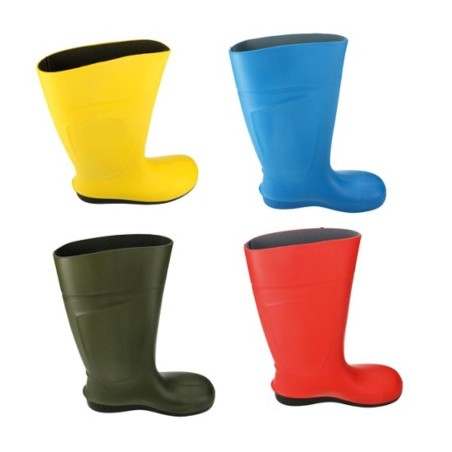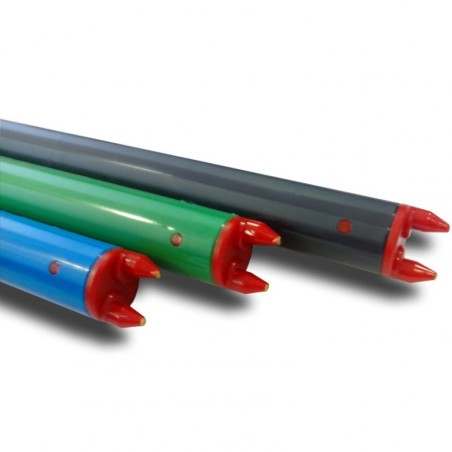Vehicles and their drivers represent one of the most significant biosecurity risks of disease transmission for pig production units. Although truck and trailer decontamination technology is better than it has every been, producers must always assume that every transfer event poses a contamination risk. This risk is especially important for commercial vehicles that transport animals from farms of different health statuses.
When a transport vehicle moves animals that are shedding infectious organisms, the vehicle becomes contaminated and an effective decontamination process becomes critical. Delivering a high quality washing and disinfection process is tough to deliver and not always a well performed task. And even when a vehicle is properly decontaminated, the risk of the driver tracking infectious organisms from outside of the clean vehicle into the clean zone can be an additional risk.

Lowering these risks is a regular focus of many practitioners and producers. In this article, we focus on some of the key aspects of well planned and designed animal transfer facilities I(i.e. loading chutes or loading bays) that are used for moving animals into (i.e. replacement gilts and boars) and out of (i.e. growing & market pigs and cull sows) the farm.
What are the characteristics of the ideal loading chute?
Loading Chute Location: Ideally, the loading chute is located on the perimeter of the controlled traffic area of the swine premises to create a large segregation from the animal space. Sometimes, the transfer location is located outside of the perimeter of the farm premises. In these cases, the animals are moved by internal trucks and external trucks are effectively prevented from contaminating the area directly around the animal production area. This has been achieved in many farms with the use of external chutes and they are very practical when small number of animals need to be moved (Pic 1). Location of the chute should allow the livestock transport driver to see the loading chute while backing up.
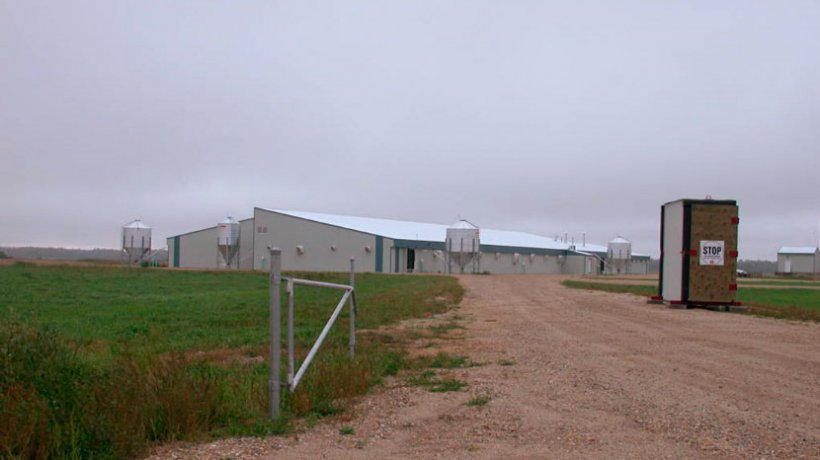
Loading Chute Design: In the swine industry, there are many loading chute designs that are both functional and biosecure. When considering the best design, three of the most important aspects we need to take into consideration include the following:
- What style of trailers is using the chute? Platform and loading chute dimensions need to be well matched to the trailers using them so that the animals can be transferred in a biosecure way. Picture 2, 3, and 4 show various trailer design types that serve swine farms in different parts of the world.
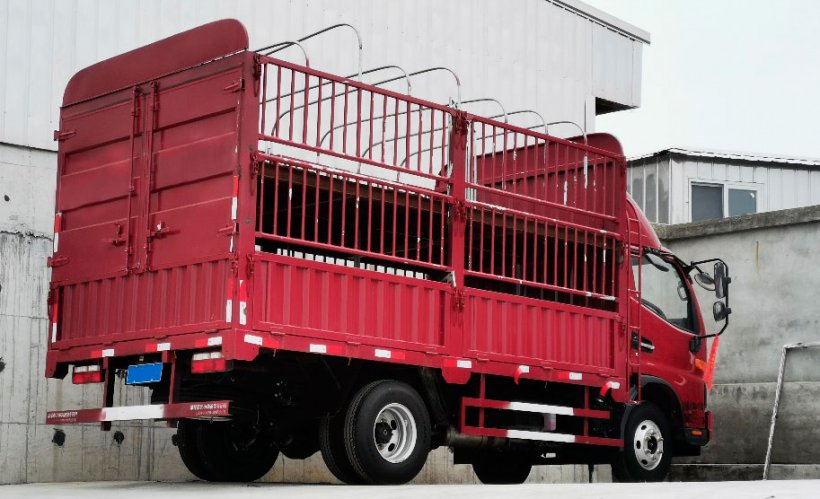

- What biosecurity protocols are we asking the barn workers and truck drivers to do? Not only producers should communicate the animal transfer biosecurity protocols to the farm workers and truck drivers prior to the activity, but they also need to provide well designed loading chutes that facilitate the compliance with these protocols. Physical indicators of clean and dirty zones, such as red lines on the floor or bars, that allow pig movement but prevent people movement are always helpful to remind workers and truck drivers that cross contamination puts the farm at a high risk of infection (Pic 5 and 6). In some regions, incorporating a well designed area for the truck driver to enter the trailer is an excellent way to prevent contamination from the area surrounding the entry area into the animal handling area of the trailer. How is the loading chute kept clean and effectively decontaminated under different climatic conditions? Ideally, loading chutes should be enclosed, insulated, and heated when necessary. These design aspects become especially important in colder climates that prevent disinfectant effectiveness and organism survival during winter months (Pic 7). As well, they must be made of materials that will allow an effective cleaning and disinfection (which includes drying!!!) after each use. Drainage of the loading chute must ensure that cleaning waters do not enter the unit.
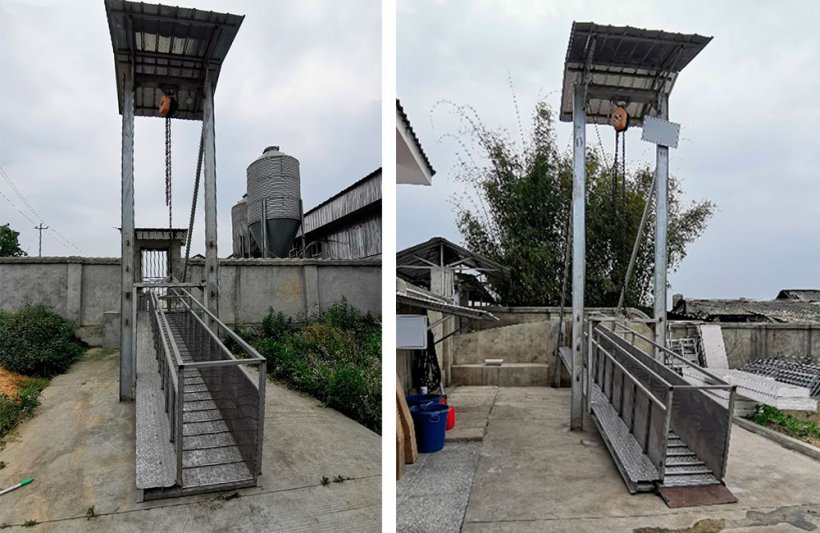
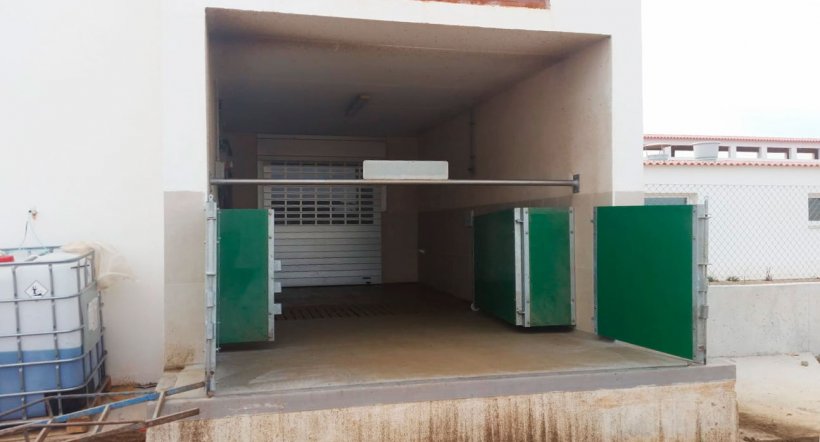
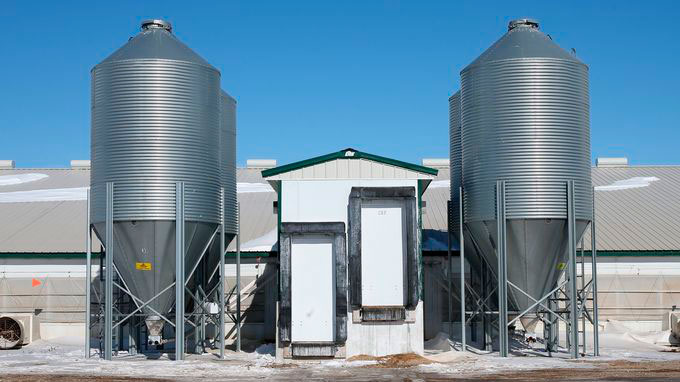
Loading Chute Purpose: For certain types of production units, biosecurity of animal transfers can be increased by having separate loading chutes for the loading in and loading out processes. A quick traffic analysis of the farm to fully understand how vehicles move within the farm premises will help to focus on the areas of higher risk for cross contamination. Typically, the load in chute and the load out chute for clean animals will be in a separate location from the load out chute for market or cull animals. Ultimately, the two types of loading chutes depend on the cleanliness status of vehicles and priority of maintaining the health of the animals that need to be moved. In a second article, about the biosecurity of loading chutes, further ideas on how to perform a traffic analysis and other specifics on the most common loading chutes designs will be discussed.




